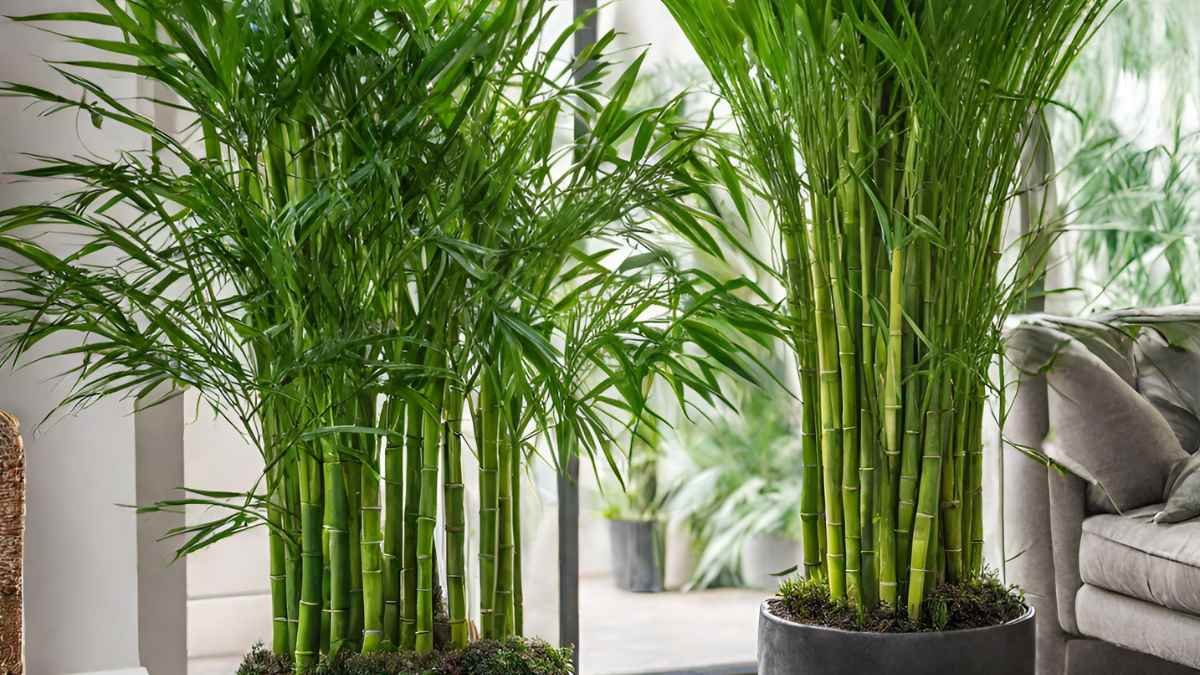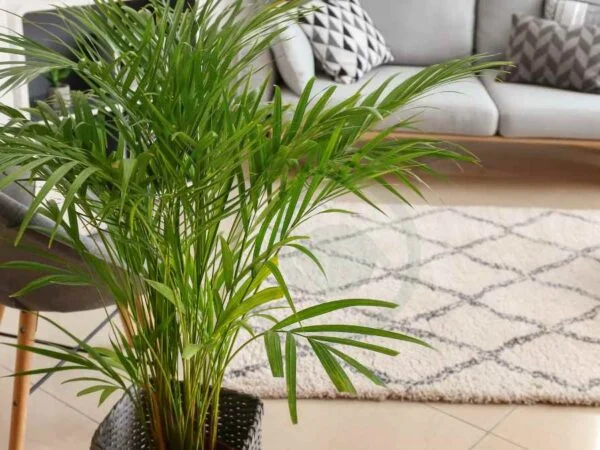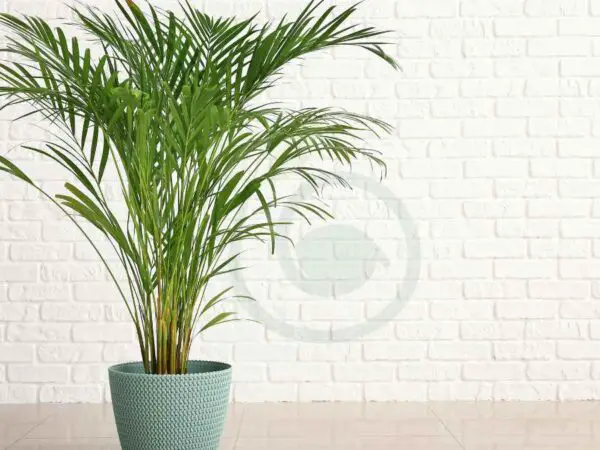Did you know that bamboo palms and areca palms are among the top choices for indoor plants due to their air-purifying qualities? These two popular indoor palm species, fan palms and fishtail palms, not only add a touch of green to your space but also offer various benefits for your well-being and home environment. When comparing bamboo palm vs. areca palm, it's essential to understand their differences in care requirements, appearance, and suitability for different living conditions. By exploring the unique characteristics of each plant, you can make an informed decision on which palm suits your preferences and lifestyle best.
Key Takeaways
- Choose Wisely: Consider your space, lighting conditions, care abilities, and temperatures before selecting between bamboo palm and areca palm.
- Indoor Tips: Both palms can thrive indoors with proper care, including adequate sunlight, watering, and occasional fertilization.
- Air Quality: Use palms not just for decoration but also for air purification, as they can help remove toxins from indoor air.
- Regular Maintenance: Regularly check for pests, adjust watering based on season, and trim dead leaves to keep your palm healthy.
- Problem Solving: Address issues like browning leaves, pests, or overwatering promptly to maintain the vitality of your palm.
- Personal Preference: Ultimately, the choice between bamboo palm and areca palm boils down to personal preference and the specific conditions of your living space.
Palm Basics
Types Indoors
When deciding between bamboo palm and areca palm for indoor spaces, lighting conditions play a crucial role. The bamboo palm thrives in low to medium light, while the areca palm requires bright, indirect light. Consider the available natural light in your indoor area to choose the best fit.
Evaluate the size and growth rate of each palm before placing them indoors. The bamboo palm grows at a slower pace and remains compact, making it ideal for smaller indoor spaces. In contrast, the areca palm grows faster and larger, requiring more room to flourish indoors.
When it comes to aesthetic appeal, both palms offer unique visual benefits when grown indoors. The delicate fronds of the bamboo palm add a touch of elegance and air-purifying properties to indoor spaces. On the other hand, the feathery foliage of the areca palm brings a tropical feel and vibrant greenery indoors.
Care Tips
For optimal growth, follow specific guidelines for watering and fertilizing each palm. The bamboo palm prefers slightly moist soil but can tolerate occasional dryness between watering sessions. In comparison, the areca palm requires consistently moist soil to thrive indoors.
Monitor the indoor environment's temperature and humidity levels to ensure proper care for both palms. The ideal temperature range for these palms is between 65-80°F (18-27°C), with humidity levels around 50-60%. Use a humidifier or pebble tray to maintain adequate moisture levels.
Regularly prune dead or yellowing fronds from both palms to promote overall health. Trimming off damaged foliage helps prevent disease spread and maintains the plants' appearance. Ensure you use clean pruning tools to avoid introducing infections during trimming sessions.
Warning Signs
Watch out for yellow or brown leaves, as they indicate stress or improper care for both palms. Adjust watering schedules or check for environmental factors causing leaf discoloration to address these issues promptly.
Be cautious of overwatering, which can lead to root rot problems in both types of palms. Allow the soil to partially dry out between waterings to prevent waterlogged conditions that harm root health.
Look out for common pests like spider mites that can infest and damage both types of palms indoors. Regularly inspect the undersides of leaves for tiny webs or speckling, indicating pest presence that requires immediate treatment.
Bamboo Palm Overview

Growth Habits
Bamboo Palm grows moderately, reaching a height of about 4-12 feet, while Areca Palm can grow up to 6-7 feet in ideal conditions. Bamboo Palm tends to grow vertically, with slender stems and lush foliage at the top. In contrast, Areca Palm grows outward with multiple stems emerging from the base.
Understanding the growth habits is crucial for proper care. Bamboo Palm's vertical growth requires occasional pruning to maintain its shape, while Areca Palm's outward growth may need more space. The distinct growth patterns influence where these palms are best suited indoors or outdoors.
Care Requirements
Both palms thrive in well-draining soil and bright, indirect light. Bamboo Palm prefers slightly moist soil and should be watered when the top inch feels dry. On the other hand, Areca Palm needs more frequent watering to keep the soil consistently moist but not waterlogged.
Differences arise in light requirements; Bamboo Palm tolerates lower light conditions better than Areca Palm, which thrives in bright, indirect sunlight. Soil preferences also vary; while both need well-draining soil, Areca Palm benefits from occasional repotting due to its rapid growth rate.
Consistent care is essential for optimal growth. Regular watering schedules and monitoring light exposure are critical for preventing issues like yellowing leaves or root rot. Understanding these specific care needs ensures vibrant and healthy palms in your indoor space.
Indoor Benefits
Having Bamboo and Areca Palms indoors offers natural air purification through their ability to remove toxins like formaldehyde and benzene from the air. These plants not only enhance indoor aesthetics with their tropical vibes but also contribute to a healthier living environment by improving air quality.
The greenery provided by Bamboo and Areca Palms creates a soothing ambiance indoors, promoting relaxation and reducing stress levels. Imagine coming home to a tranquil space filled with these lush palms that not only beautify your surroundings but also offer a breath of fresh air.
Areca Palm Overview
Growth Patterns
Areca Palms grow faster compared to Bamboo Palms, reaching heights of up to 6-7 feet within a few years. In contrast, Bamboo Palms have a slower growth rate, typically growing up to 3-5 feet in height. The difference in growth rates impacts the care needs of each palm significantly. When planning for future growth and space requirements, consider the rapid growth of Areca Palms and the more moderate growth of Bamboo Palms.
Care Needs
For watering, Areca Palms prefer regular watering, allowing the soil to dry slightly between waterings. On the other hand, Bamboo Palms require less frequent watering due to their sensitivity to overwatering. Regarding light exposure, Areca Palms thrive in bright, indirect light, while Bamboo Palms can tolerate lower light conditions. Tailor your care routine by adjusting watering schedules and light exposure based on the specific needs of each palm species. Consider the long-term commitment required for providing adequate care to ensure healthy growth.
Purification Benefits
Both Bamboo Palm and Areca Palm are known for their air-purifying properties, helping remove toxins such as formaldehyde and benzene from indoor air. These plants contribute to improving air quality by releasing oxygen and absorbing carbon dioxide during photosynthesis. By incorporating these natural purifiers into your indoor space, you can create a healthier environment with cleaner air for you and your family to breathe.
Key Differences
Appearance
Bamboo Palm and Areca Palm exhibit distinct visual characteristics. Bamboo Palm features light green foliage with a feathery texture, while Areca Palm boasts bright green leaves with a fluffy appearance. The Bamboo Palm's slender stems and delicate fronds contrast the fuller, bushier look of the Areca Palm.
When it comes to indoor decor styles, the Bamboo Palm's elegant and airy foliage complements modern and minimalist aesthetics. On the other hand, the lush and vibrant appearance of the Areca Palm adds a tropical touch to spaces with bohemian or eclectic design themes.
Growth Habits
The growth habits of these palms differ significantly. Bamboo Palms tend to grow more slowly and stay relatively compact in size, making them ideal for smaller indoor spaces. In contrast, Areca Palms are known for their rapid growth rate, quickly reaching impressive heights if provided with proper care and conditions.
Areca Palms require regular pruning to manage their size and shape as they can grow quite tall if left unchecked. On the other hand, Bamboo Palms maintain a more manageable size, making them easier to incorporate into various room layouts without overwhelming the space.
Care Requirements
In terms of care requirements, both palms have specific needs that must be met for optimal growth. Bamboo Palms thrive in bright, indirect light but can tolerate lower light conditions. They prefer well-draining soil and require regular watering to keep the soil consistently moist but not waterlogged.
Areca Palms demand bright, indirect light to thrive and should be shielded from direct sunlight to prevent leaf burn. These palms also require regular watering to keep the soil consistently moist but not soggy. Maintaining adequate humidity levels is crucial for the health of Areca Palms.
Growing Palms Indoors
Best Practices
Bamboo Palm
Bamboo Palm, known for its air-purifying qualities, thrives in indirect light and well-draining soil. This palm requires regular watering to maintain moisture levels. It is crucial to avoid overwatering to prevent root rot. Bamboo Palm benefits indoor spaces by adding a touch of tropical elegance.
Areca Palm
Areca Palm, with its graceful fronds, prefers bright, indirect sunlight and regular watering. To ensure the health of Areca Palm indoors, it's essential to provide humid conditions and occasional misting. This palm's versatility shines through in various settings due to its lush appearance.
Common Mistakes
- Overwatering is a common mistake that can lead to root rot in both Bamboo Palm and Areca Palm.
- Lack of proper lighting can hinder the growth of these palms, affecting their overall health.
- Neglecting humidity requirements can cause browning of the palm leaves, impacting their aesthetic appeal.
To avoid these pitfalls, owners should ensure proper drainage for the palms and use a well-balanced fertilizer during the growing season. Monitoring humidity levels and providing adequate light exposure are key factors in maintaining the vitality of Bamboo Palm and Areca Palm indoors.
Decoration and Air Purification
Bamboo Benefits
Bamboo Palm offers more than just visual appeal. Its ability to purify the air makes it a valuable addition to indoor spaces. With high humidity tolerance, it thrives in various environments, enhancing overall well-being.
Low-maintenance and resilient, Bamboo Palm is an ideal choice for those seeking a hassle-free plant. Its air-purifying qualities help remove toxins, promoting cleaner indoor air quality.
- Requires minimal care
- Thrives in different humidity levels
- Enhances indoor air quality
Areca Advantages
Areca Palm stands out for its unique advantages when grown indoors. It requires little maintenance and adapts well to varying light conditions, making it an excellent choice for homes or offices.
The adaptability of Areca Palm makes it a popular option among plant enthusiasts. Its lush foliage and elegant appearance add a touch of greenery to any indoor setting.
- Low maintenance requirements
- Adaptable to different light conditions
- Adds elegance to indoor spaces
Drawbacks Comparison
When comparing the drawbacks of Bamboo Palm and Areca Palm for indoor growth, maintenance challenges arise. While Bamboo Palm is low-maintenance, it may struggle in low-light conditions.
Areca Palm, on the other hand, can be sensitive to overwatering and requires regular pruning to maintain its appearance. Both palms have specific care needs that must be met for optimal growth indoors.
- Maintenance challenges with low-light conditions
- Sensitivity to overwatering and pruning needs
Maintenance and Care
Watering Essentials
Establish a consistent watering routine to keep Bamboo Palm and Areca Palm healthy and thriving. Ensure the soil is moist but not waterlogged to prevent root rot. Adjust watering frequency based on seasonal changes and growth stages for optimal hydration.
Proper drainage is crucial to avoid waterlogging, which can lead to root rot and other issues. Use pots with drainage holes and well-draining soil to maintain adequate moisture levels. Monitor the soil's moisture content regularly to prevent overwatering.
During different seasons or growth stages, adjust your watering schedule accordingly. Palms may require more water during hot summers or less frequent watering in winter when growth slows down. Pay attention to the plant's needs for best results.
Light Needs
Determine the ideal light conditions essential for the healthy development of Bamboo Palm and Areca Palm. Insufficient light exposure can lead to stunted growth and pale foliage in both palm species. Place them in bright, indirect light for optimal growth.
Inadequate light exposure can result in leggy growth or yellowing leaves. Ensure that your palms receive enough natural light or supplement with artificial lighting if necessary. Adequate light promotes vibrant foliage coloration and overall plant health.
Provide a variety of light sources such as fluorescent lights or LED grow lights to ensure consistent illumination. Rotate plants periodically to promote even growth on all sides and prevent leaning towards the light source.
Soil and Fertilizer
Choose well-draining soil mixes specifically formulated for tropical plants like Bamboo Palm and Areca Palm. These palms thrive in loose, fertile soil that allows proper root aeration and drainage. Avoid compacted soils that retain excess moisture.
Both palm species have specific nutrient requirements for optimal growth. Use a balanced fertilizer with essential nutrients like nitrogen, phosphorus, and potassium to support healthy foliage and root development. Regular fertilization during the growing season is crucial for sustained growth.
Maintain good soil quality by repotting palms every few years to refresh the soil mix and remove any accumulated salts or mineral deposits. Fertilize according to package instructions or consult a horticulturist for personalized recommendations.
Problem Solving
Implement preventive measures to protect Bamboo Palm and Areca Palm from common pests. Regularly inspect the plants for any signs of pest activity, such as yellowing leaves or visible insects. Use organic insecticidal soaps to control pests like spider mites and mealybugs.
Identify signs of pest infestation early on to prevent further damage. Isolate infected plants to avoid spreading pests to other palms. Consider introducing beneficial insects like ladybugs to naturally control harmful pests. Ensure proper ventilation and avoid overwatering, which can attract pests.
Explore natural remedies such as neem oil or a mixture of water and dish soap for safe pest management. Neem oil acts as a natural insect repellent, while the soap solution can suffocate soft-bodied pests. These methods are effective alternatives to chemical pesticides.
Learn about common diseases that affect Bamboo Palm and Areca Palm, including fungal infections like root rot and leaf spot diseases. Implement preventive practices by ensuring proper drainage to prevent waterlogged soil, which can lead to root rot. Avoid overhead watering to minimize the risk of foliar diseases.
Recognize early symptoms of diseases such as yellowing or browning leaves, spots on foliage, or wilting. Take prompt action by pruning affected areas and disposing of diseased plant parts properly. Apply fungicides or bactericides following manufacturer instructions for effective disease treatment.
Regularly clean pruning tools with a disinfectant solution between uses to prevent the spread of diseases among plants. Maintain good air circulation around palms by spacing them adequately apart. Monitor plant health closely and address any issues promptly to prevent disease outbreaks.
Choosing the Right Palm
Space Considerations
Evaluate the space requirements for accommodating Bamboo Palm and Areca Palm indoors. Ensure enough room for their growth. Plan based on available space and lighting conditions to promote healthy development.
Consider the placement options thoughtfully as both palms require adequate sunlight for proper growth. Allow ample space around them to prevent overcrowding and ensure optimal air circulation.
Aesthetic Preferences
Customize your indoor decor by incorporating Bamboo Palm and Areca Palm to elevate aesthetics. These palms can add a touch of nature's beauty to any room, enhancing visual appeal.
Experiment with different design themes and arrangements to create a harmonious and visually appealing indoor environment. Their lush green foliage can complement various interior styles, from minimalist to tropical-inspired designs.
Air Purifying Needs
Optimize the air-purifying benefits of Bamboo Palm and Areca Palm by strategically placing them in your living spaces. These palms are renowned for their ability to filter out toxins from the air.
Closing Thoughts
Having explored the nuances between bamboo palm and areca palm, you now possess a deeper understanding of these popular indoor plants. Remember, choosing the right palm for your space depends on factors like light availability, maintenance commitment, and desired aesthetic. By considering these aspects, you can ensure that your palm thrives and enhances your indoor environment.
Incorporate the insights gained from this comparison into your decision-making process when selecting indoor plants. Whether you opt for the elegant bamboo palm or the vibrant areca palm, your choice can transform your living or workspace. Take the time to assess your needs and preferences before making a selection. Your well-informed decision will not only elevate your surroundings but also contribute to a healthier indoor atmosphere.
Frequently Asked Questions
What are the basic characteristics of palms?
Palms are tropical plants with long, feather-like leaves and a sturdy trunk. They are known for their ability to thrive in warm climates and can vary in size from small indoor plants to towering outdoor trees.
Which is better for indoors: Bamboo Palm or Areca Palm?
The Bamboo Palm is more suited for indoors as it tolerates lower light conditions better than the Areca Palm. It also requires less maintenance, making it an ideal choice for indoor spaces with limited sunlight.
How do Bamboo Palm and Areca Palm differ?
Bamboo Palms have slender stems resembling bamboo, while Areca Palms have feathery, arching fronds. Bamboo Palms are more tolerant of low light and dry air compared to the moisture-loving Areca Palms.
How can I ensure proper growth of indoor palms?
To promote healthy growth, place your palms in bright, indirect light, water them regularly but allow the soil to dry slightly between waterings, maintain humidity levels, and fertilize sparingly during the growing season.
What benefits do indoor palms provide beyond aesthetics?
Indoor palms like Bamboo and Areca help purify the air by removing toxins, add a touch of nature to your space, create a calming ambiance, and can even boost productivity and mood by bringing a sense of tranquility.
Image Source: Paid image from CANVA





